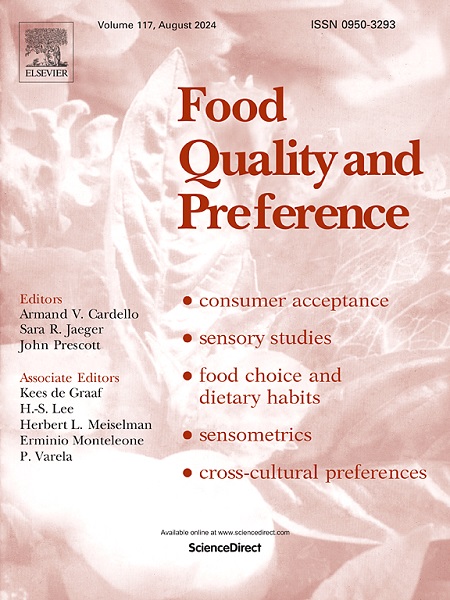Fact-based environmental messaging did not influence Australians' attitudes and intentions towards cultivated seafood
IF 4.9
1区 农林科学
Q1 FOOD SCIENCE & TECHNOLOGY
引用次数: 0
Abstract
Our oceans currently experience perilous times from a worsening climate crisis and other human impacts. Wild caught and farmed seafood production represents a primary human impact on marine ecosystems. Urgent action must be taken to reduce the effects of these impacts while simultaneously considering the protein needs of a growing global population. Cultivated seafood is a food product of the cellular agriculture industry, which seeks to create alternative seafood production methods. Cultivated seafood has the potential to significantly reduce our reliance on wild-caught fish and aquaculture systems. Consumer perceptions will play a vital role in the acceptance and uptake of such products. We investigated consumer perceptions of cultivated seafood for Australians (N = 1005). Using a 2 × 3 factorial design, we tested whether fact-based environmental messaging influenced attitudes and intentions to try and eat cultivated seafood, and seafood from wild-caught and farmed production systems. We also investigated whether demographic variables related to attitudes and intentions for each seafood production type. We found that environmental messaging did not influence consumers attitudes and intentions towards cultivated seafood. However, it did reduce participants attitudes and intentions to consume wild-caught seafood. Males and younger participants reported more favourable attitudes and intentions towards cultivated seafood. Higher preferences for seafood saw stronger attitudes and intentions towards consumption of all seafood production systems. Understanding drivers of consumers' attitudes and intentions towards cultivated seafood will inform communication approaches highlighting the positive potential of cultivated seafood and contribute to its successful introduction to the mass market.
基于事实的环境信息并未影响澳大利亚人对养殖海产品的态度和意向
本文章由计算机程序翻译,如有差异,请以英文原文为准。
求助全文
约1分钟内获得全文
求助全文
来源期刊

Food Quality and Preference
工程技术-食品科技
CiteScore
10.40
自引率
15.10%
发文量
263
审稿时长
38 days
期刊介绍:
Food Quality and Preference is a journal devoted to sensory, consumer and behavioural research in food and non-food products. It publishes original research, critical reviews, and short communications in sensory and consumer science, and sensometrics. In addition, the journal publishes special invited issues on important timely topics and from relevant conferences. These are aimed at bridging the gap between research and application, bringing together authors and readers in consumer and market research, sensory science, sensometrics and sensory evaluation, nutrition and food choice, as well as food research, product development and sensory quality assurance. Submissions to Food Quality and Preference are limited to papers that include some form of human measurement; papers that are limited to physical/chemical measures or the routine application of sensory, consumer or econometric analysis will not be considered unless they specifically make a novel scientific contribution in line with the journal''s coverage as outlined below.
 求助内容:
求助内容: 应助结果提醒方式:
应助结果提醒方式:


